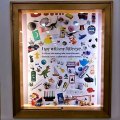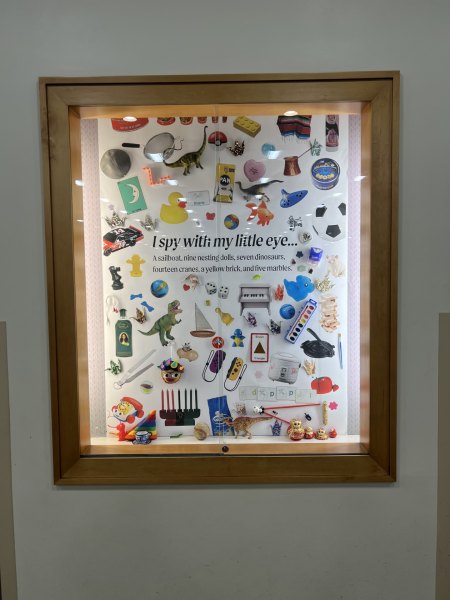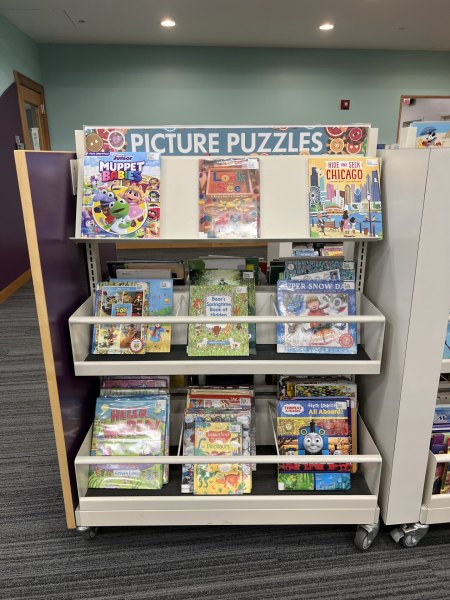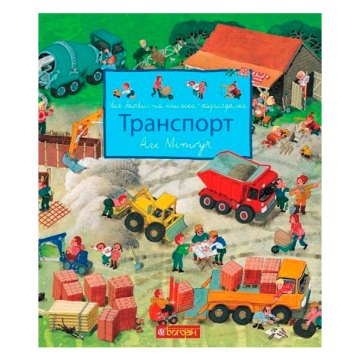Kids & Parents
Keep kids busy with search and find activities at the library

08.08.23
As caregivers, it’s easy to forget some of the simple activities we have at our disposal.
I love the versatility of the classic I Spy game.
It’s a great basic format to differentiate for kids of all ages.
Our summer scavenger hunt may be over, but any location can become the site of a search and find adventure.
You just need to give the right clues...
If you've ever waited in a doctor's office, crowded restaurant lobby, or even just a longer than normal line with a little one in tow, you've likely felt the pressure to entertain and engage your captive audience.
I remember trying out a game of I Spy with my daughter when she was a toddler; it didn't go well.

I underestimated all the things I was asking her to understand with my one statement:
"Let’s play a game! I spy with my little eye, something green."
Did she need to go grab the object or point to something?
Was it hidden or in plain sight?
What did the word green mean?
What is a game, anyways?
Was she supposed to answer with a similar observation?
Was this for fun, or did I genuinely need something?
It’s easy for grownups to take for granted the cognitive load of the tasks we present to kids.
Familiarity with the game and developmental stage play heavily into their enjoyment.
If the activity doesn’t fit their abilities, it will not engage them.
If they don’t experience success in a timely manner, they will not want to keep going.
On the other end of the spectrum, our go-to games can become boring and predictable for older kids. “Not I spy, AGAIN!”
Youth services just put up a new I Spy display.
We welcome you to enjoy and interact with the visuals however you want, but also wanted to give some example prompts to use with our display or to take on the road with you wherever you play I spy.
--------------------------------------
Baby/Toddler
In this developmental stage, focus on building prerequisite skills, modeling how to play the game, and giving kids quick success to reinforce the activity.
You can....
Expose your child to describing words like shape, size, color, texture, and position (above, below, etc...)
Point to objects and name them or tell the child what color they are
Point to and name an object and have them tell you what color it is
Point to a familiar object and have the child name it
Model how to play I spy by playing both roles in the interaction and/or voicing your thinking out loud
Ask the child to...
Find an object of a known color (any object of that color)
Find a specific object that you know is familiar to them
Find a specific object within clear boundaries (cover up part of the page in a search and find book or give clear physical directions of where to find something (e.g., it’s at the very top of the display, look up)
Preschool
You may have to do some modeling of the game if your child has not played before, but once they get the gist, you can use the game to reinforce and practice developmentally appropriate concepts.
Ask the child to...
Find an object that fits two descriptors (e.g., red and wooden or striped and smooth)
Find an object of a known shape (suggestions: rectangle, circle, triangle)
Find something that fits a category (e.g., something you could eat with, something you could use in your hair)
Find something that starts with a certain sound (suggestions: s, t, c, a)
Tell you where they’ve seen a given object before (e.g., “Who uses a sieve like that in the kitchen)
Find more than one of a known object or show them one object and see if they can find another of the same object.
School Aged and Beyond
As long as kids know the basics of the game, you can keep ratcheting up the difficulty. Notice what clues excite them and try to incorporate what they are learning in school.
Ask the child to...
Find an object that fits three or more descriptors (e.g., red, wooden, and used in the kitchen)
Find an object that rhymes with a given word
Find an object of an approximate measurement

Make up an original story based on three give objects
Find a list of more than two objects that they must remember in order
Come up with a category that fits at least ten objects in the display, on the page, etc...
--------------------------------------
We also have a whole collection of puzzle books great for waiting rooms, travel, and end of summer boredom.
There are the traditional I Spy books, search and find books with popular characters, and books based on fun locations and adventures.
You’ll find these titles in our Picture Puzzle section but also throughout our collection (see some suggested titles below).
And Waldo?
He’s still around too, as long as you can find him. In our Spanish collection he’s known as “Wally.”
